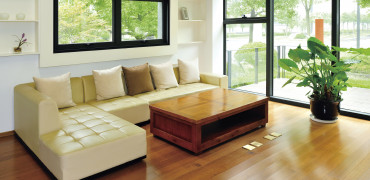As we enter the exam season, lots of schoolchildren will be stuck indoors, heads down, feverishly working through their papers and racking their brains for the knowledge that all the dedicated revision has crammed in there.
The last thing they need to worry about is whether the air in the room is doing them harm.
When I went to school and faced the end of year exams, the worst we had to contend with was whether it would get too hot and whether we would be allowed to open the windows to let in some sort of relief in the form of a cool breeze.
With current pollution levels that would not be the right thing to do these days, yet recent reports indicate that the quality of the air INSIDE our schools may actually be worse than the air outside.
Modern, air tight buildings are energy efficient but may be trapping in damaging toxins and pollution
Toxic indoors says WHO
Air quality has certainly been in the news a lot recently as part of the ongoing debate about inner city pollution, transport and how we move away from the use of diesel engines.
But little has been said about the quality of air inside our buildings which is why the recent news that we may be harming our children whilst they’re at school should raise alarm bells.
The BBC reported that school pollution levels in London may be breaking World Health Organisation guidelines.
Meanwhile, both The Guardian and The Standard report that the air inside London schools is more toxic than the air outside.
Energy bills
The other factor affecting this debate is the need to ensure that all of our buildings, including schools, are as energy efficient as possible, so that we reduce running costs and mitigate the effects on climate change.
This means that modern and refurbished buildings are as airtight as possible, so that any energy used to heat or cool each room is not wasted through leaks or open windows.
That’s great in terms of energy efficiency but not good if all we are doing is trapping in pollutants and toxins for the building occupants to sit in all day.
Which is where effective ventilation comes in.
Recover and filter
The best systems are called Mechanical Ventilation with Heat Recovery (MVHR) because they bring in fresh, outdoor air and reject stale indoor air, but also capture the vast majority of temperature (heating or cooling) from the outgoing air to mean the incoming air uses less to bring it up to the room temperature.
We market a range called Lossnay, which can capture over 80% of the thermal energy from the outgoing air and is available for a single room, or a whole building.
Good MVHR such as Lossnay also come with filters which help block particulates, pollution and even smells from entering the indoor space, leaving a fresh, comfortable and safe environment for the occupants.
Whilst solving the outdoor levels of pollution is going to require effort from government, industry and the wider community, doing something about indoor air quality can and should be tackled now.
It is simply not right to subject our school children, or ourselves, to toxic indoor air quality in places that should act as a safe haven from the world outside.
You can check how affected your child's school is likely to be at this dedicated site.




